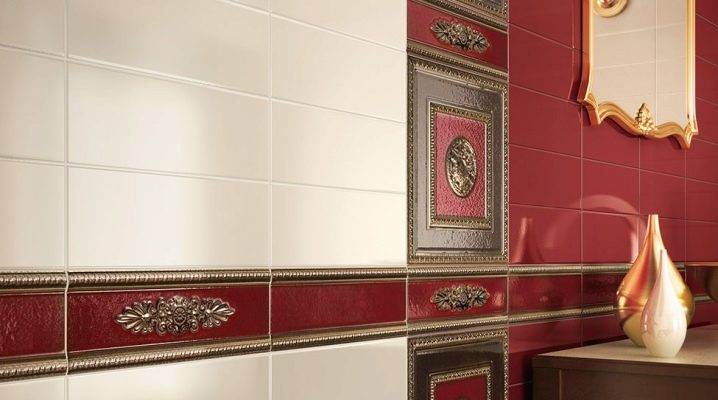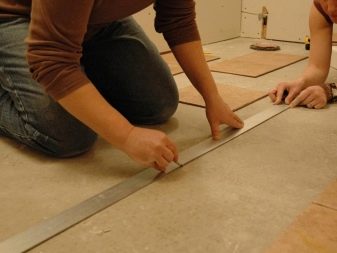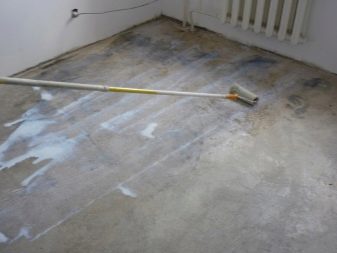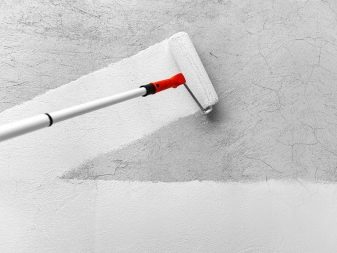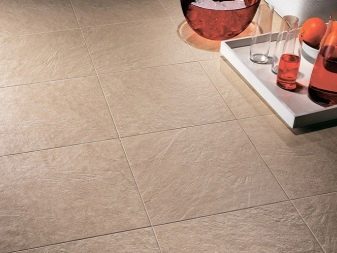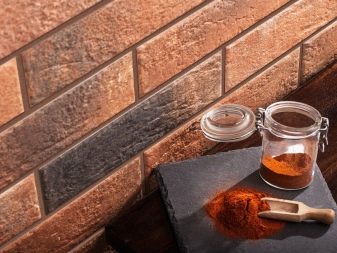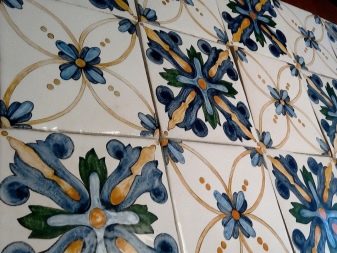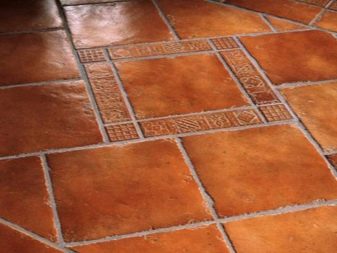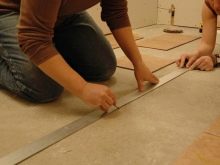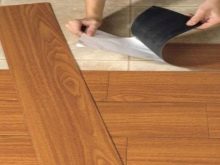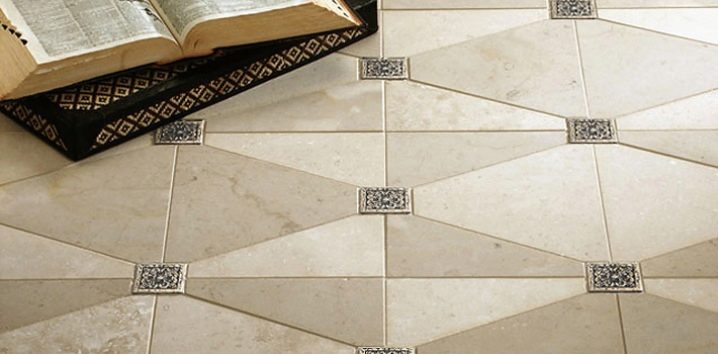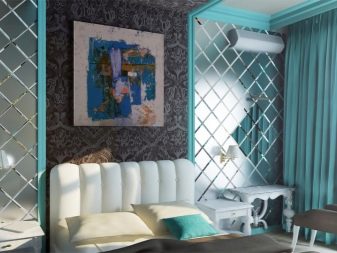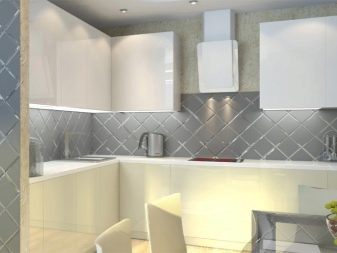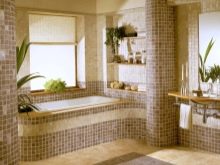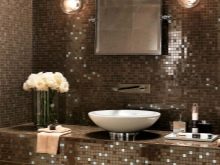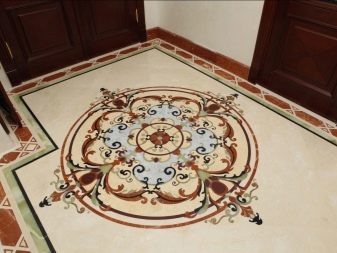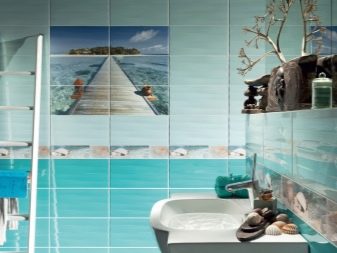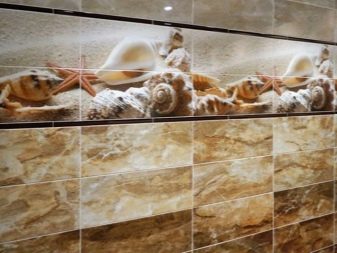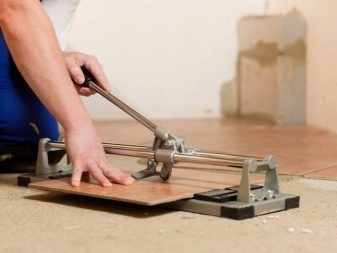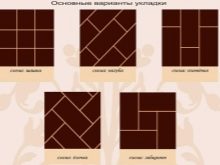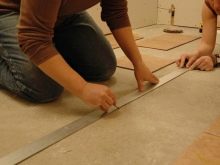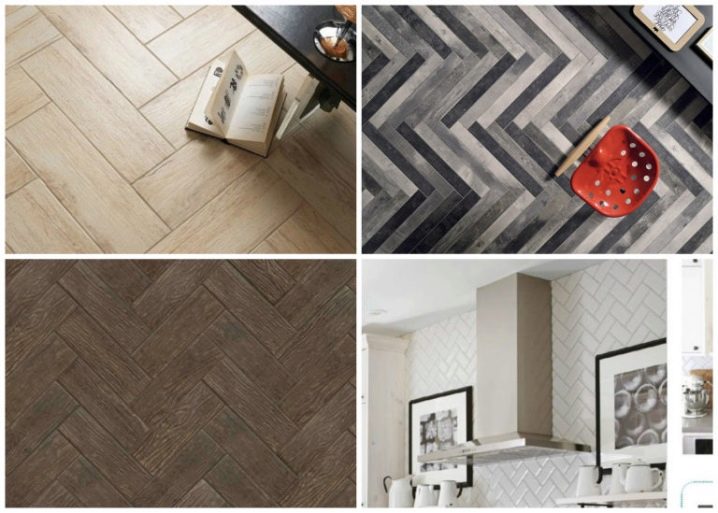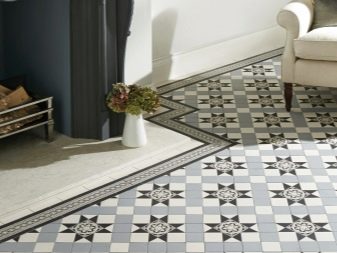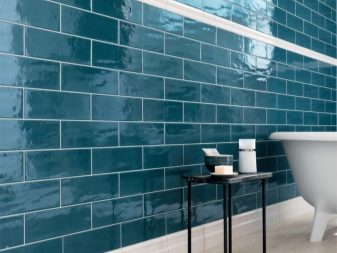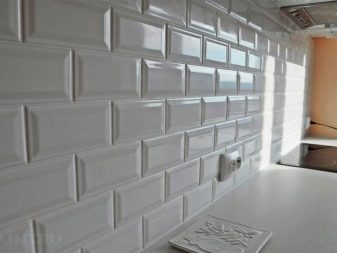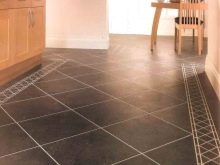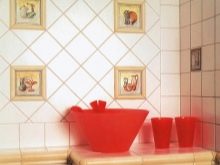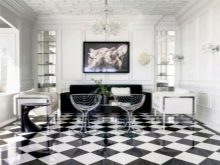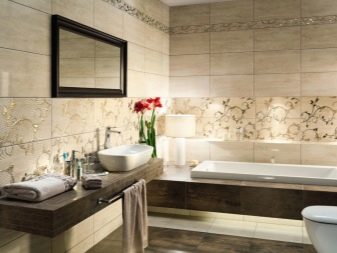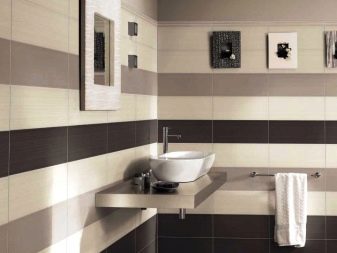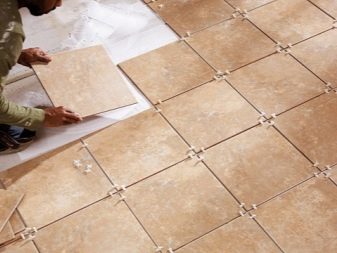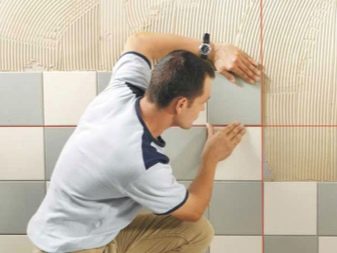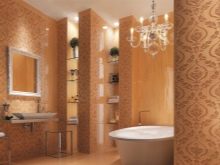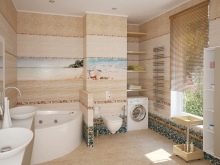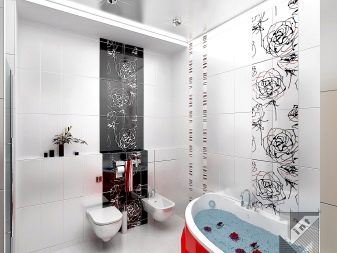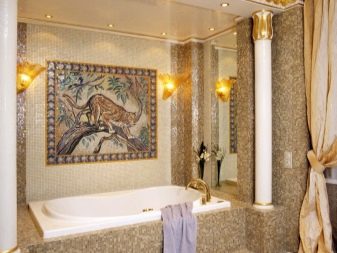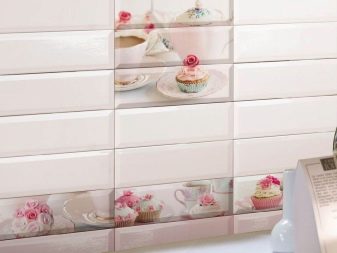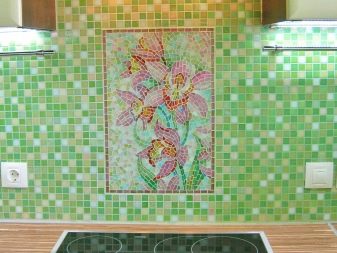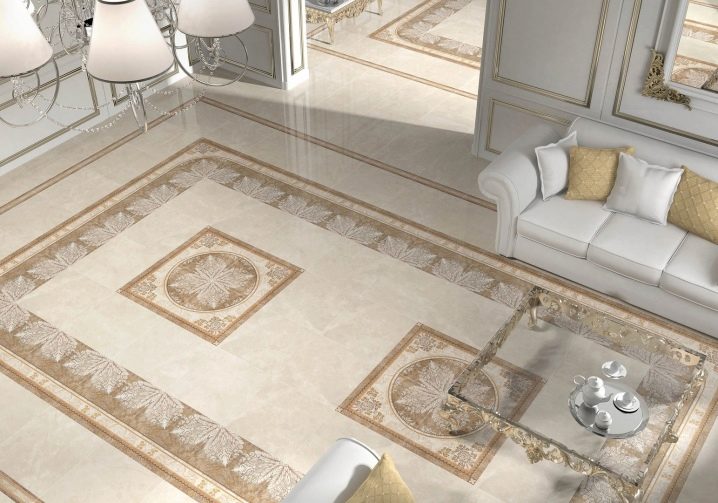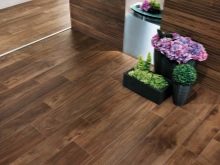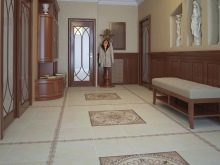Layout tiles: options and schemes
Tile is one of the most common materials used in interior decoration. Such popularity and demand are due to many factors. Key among them are practicality, durability, versatility in use and availability due to a wide price range, where the buyer can focus on their financial capabilities.
The original tile layout will give any interior a peculiar zest, and if necessary, miraculously visually expand or reduce the space.
Coverage Features
To choose the most suitable tile layout, you must, first of all, take into account the specifics of the repaired premises, its area, purpose.
It is important to remember that the material needs to be laid only on an aligned surface, this will prevent the possible occurrence of cracks and chips later.
Before the laying process it is necessary to make a screed. When working in the toilet and bathroom, it is necessary to form a waterproofing layer.
When facing the walls, it is necessary to dismantle the old coating and make plastering works with reinforcement using a construction grid and lighthouses. The process of laying tiles requires accuracy in calculations and accuracy.
Kinds
There are several types of tiles. Ceramic is the most popular largely due to its natural origin. In essence, ceramics are heat-treated clay.
Ceramic tiles can be classified by production methods.
The most popular ones are:
- Porcelain stoneware - the most durable representative in its class. Due to the specific production process, this material bypasses granite strength. It is made by pressing and single firing, but the temperature and pressure is higher than in the manufacture of other materials.
- Clinker. The base of this tile is sealed. It is produced by extrusion from powder mixtures under the influence of pressing and pressure. This method makes it possible to manufacture tiles of any size and shape.
- Majolica. For the production of used red clay, enamelled white and twice the glaze: before the drawing and after its application. The material undergoes the process of double firing. It is painted with multicolored paints from glaze mixed with tin oxide.
- Cotto. It is made of red clay by extrusion. In general, the products are not glazed, as the terracotta color scheme is a distinctive feature of this type of tile. It adds to the decor an element of noble antiquity and gives the room a specific antiquarianity.
Ceramic tile under the tree and under the laminate is in great demand and popularity. Thanks to unique modern production technologies, it is almost impossible to visually distinguish it from real noble wood. Especially this material is relevant for the kitchen, bathroom, bathroom, where wood cover would not have served as long as ceramic tile.
PVC plastic tile is distinguished by its ease, flexibility and moisture resistance.In terms of strength, it is inferior to ceramic, but at the price it is also much cheaper. Such material is more often used in the landscape gardening area; it is used for paving garden paths, the local area of country houses, summer cottages. It is characterized by ease of installation.
For lovers of all extraordinary and sophisticated modern manufacturers provided tiles with brass inserts. Such a detail of the interior will never be left without attention, elegantly fit into the most extraordinary design and dilute with your presence any tiled monotony. The noble brilliance of the metal and the intricacies depicted on the product captivate with their authenticity.
Mirror tile is used relatively recently, but has already earned the recognition of many interior designers, master builders and ordinary citizens. This tile is ideal for a small room that needs to be visually expanded, for example, for a miniature bathroom. Mirror tiles with fatsety, especially with well-established lighting, will give the room sophistication and refinement, thanks to the play of light and glare from the surface of the material.
But it is important to remember that moderation should also be in the mirrors and their surplus in the room can create the opposite effect, and it will be uncomfortable to be in such a room.
Mosaic is relevant at all times, despite the painstaking and time-consuming process of its installation. This is not just a construction, but a kind of art. Since ancient times, people have used mosaic to enrich their homes, and so far this method of finishing does not lose relevance. It is very convenient to use the mosaic when working in rooms with elements of a complex configuration, with convex and concave surfaces that are difficult to access when working with other finishing materials.
The process of facing with a mosaic is laborious and expensive, but with a competent approach to business, with the conscientious work of a master, the result will surely meet the highest expectations.
Sizes and shapes
The range of tile sizes is represented on the modern market in the widest range - from miniature and elegant mosaics to giant floor tiles. The choice of size depends on the purpose of the surface on which the work will be performed and, of course, on the taste preferences of the customer.The most common dimensions are 15 by 30 cm, 30 by 30 cm, 30 by 60 cm, 40 by 40 cm, 40 by 60 cm, 50 by 50 cm, 60 by 60 cm.
For flooring most often used as a large tile, so medium size, but more robust and durable. When finishing the walls, the emphasis is shifted to decorative elements, more attention is paid to the aesthetic aspect. In this area unlimited possibilities for creative flight of thought and fantasy are revealed.
If desired, you can use various decorative panels in the decorationconsisting of a whole composition of tiles, or lay out a real picture with small mosaic squares, diluting the interior of a kitchen or bathroom with such a vivid element.
The shape of the most common is square and rectangular tiles, but the diamond is also not deprived of the attention of consumers. The process of laying such tiles is carried out only in one way - by joining the same faces between them. Drawing can be diversified due to the color gamut of the material.
It is not possible to do without cutting the material using such a tile. With this form of tile you can lay out beautiful ornaments in the shape of a star or hexagon. Particularly impressive is the hexagon from a tile of three colors.
Mounting technology
Before proceeding with the layout of the tile, it is necessary to accurately calculate the amount of building material required, draw up a plan and make a marking on the previously prepared and aligned surface. Be sure to keep in mind that different variations of tile laying will require a different amount of material per one square meter.
Consider the following layouts:
- Herringbone. For this type of layout, a narrow rectangular tile is used. The name of the layout speaks for itself - the flat bars of the tiles are stacked relative to each other at a right angle. Begin work from the middle of the room, noting a flat straight line in the center across the entire working area. From this line should begin the process, it will be a guide for all subsequent installation. There is the option of laying a Christmas tree with an attachment or, as it is also called, with a trailer.
The essence of this method is that, in addition, smaller tiles are used, most often of a different color and with a decorative ornament.
- Artwork, otherwise called "carpet". Gives a wide scope of fantasy wizard, design variations can be very diverse and intricate.In such a technique are usually used from three or more shades of the same color range or different colors. The marking of the coating is carried out according to a previously drawn pattern repeating the selected pattern. When art masonry, it is possible to alternate and combine different layouts with each other. For example, the corner tile can be monochromatic and square in shape, and the center of the composition is the ornate and intricate ornament of a modular tile or mosaic.
- Bricklaying in the run. The basic principle in this layout is that the middle of each subsequent tile coincides with the extreme seam of the adjacent tile. Decking is carried out according to approximately the same rules, with the difference that the tile is not laid at half the size of the next, but at a distance of no more than its third part. Often when finishing in the run-up use the tile "pig". It is rectangular in shape, with beveled facets, which creates a textured volume effect. In form, such a tile is like a brick, which allows it to imitate brickwork.
- Diagonally. According to experts, this method of calculation is one of the most complex,therefore, it is advised to purchase in reserve at least 15% of the tile of the previously calculated amount of consumable material. The reason is that when laying in this way it is impossible to do without trimming tiles for the sides. This layout is characterized by the fact that it can visually increase the area of the room, expand it.
The main thing is to correctly measure the diagonal line along which work will be performed.
- Classic, traditional - the most common tile tile. This method is the easiest and fastest. Most often for such laying the square tile is used. For this type of masonry, there is one important rule that is suitable for other types of cladding and provides the key to success with such a laborious, but very important process of building and finishing works - this is the maximum adherence to accuracy.
In classical masonry, the master must constantly monitor whether the vertical and horizontal marking lines of the seams are uniform.
Useful tips
- The better prepared and leveled the surface before laying, the longer the tile will last.
- It is important to apply glue for tiles not only on the floor, but also directly on the tile before fixing it to the surface. According to experts, this increases the process of material exploitation at least 4 times.
- The smaller the room, the brighter the shades of the tile are advised by experts to choose. Light colors visually increase the room, make it more spacious.
- It is not recommended to use tiles of too large size when finishing small rooms. It will look cumbersome and only emphasize the lack of free space.
- The smaller the masonry elements in size, the more noticeable the defects and unevenness of the coating. And, conversely, the larger the slab, the less striking are the inaccuracies and minor errors made by the master during the work.
- It is recommended to use mixtures containing epoxy resin to make the joints darker after the grouting of the tile.
- Experts recommend purchasing material with a margin of at least 10-15% of the total calculated quantity, taking into account possible defects or trimming in the process.
Spectacular examples in the interior
Competently chosen combination of colors, textures and forms can ennoble any room, give it originality and a kind of uniqueness.When choosing a material in the decoration of bathrooms favorite colors remain light blue, green, beige, pink and purple tones. Leading positions for a long time divide the marine and vegetative subjects.
Tile with a pattern in the Empire style will give any bathroom an extraordinary chic, sophistication and aristocracy, especially in combination with the pleasant warm color of golden ocher.
Contrast color combinations look very impressive. For example, a combination of black and white tiles with a glossy finish and a contrasting pattern.
A mosaic panel in the bathroom attracts attention, and the master's jewelry work cannot help but admire with its subtlety and grace.
The decoration of kitchens feature a variety of layouts and tile colors. The main thing is to choose a design to your liking so that your stay in the room is comfortable. The topic of food and drinks here will always be most welcome.
When laying the apron is often used tile "pig". And lovers of creative approach will like such a bright addition to the interior of the kitchen, as a mosaic flower panel.
The living room is the heart of the house.With the help of tiles, you can bring a zest to this room, which always attracts the most attention, where most often all the family members and guests gather together. An excellent design solution is the layout of the floor tiles in the form of carpet. Patterns are skillfully intertwined, creating a unique holistic picture, the canvas of which is the floor of the living room.
Of particular importance is the tile in the corridor, because this room is the calling card of any house or apartment. Having come to visit each other, people, first of all, get exactly here, and every owner wants the first impression of a visit to him to remain the most pleasant. It is important to take into account the fact that this part of the dwelling has a large load in the form of the impact of footwear, dirt, dust and everything else.
On this basis, it is necessary to choose tiles of high wear resistance. The brown-beige color range, woody textures and colors bring to the interior of the corridor an atmosphere of comfort and harmony.
The variety of colors and textures of tiles presented on the modern building materials market is amazing, which makes it a real embodiment of any, even the most daring ideas of interior design.
See the video below for tips on choosing a tile layout.
